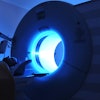The lower the CT dose, the lower the performance of computer-aided detection (CAD) systems in detecting lung nodules, according to researchers from Samsung Medical Center (SMC) in Seoul, South Korea.
"Reducing radiation dose of CT lowers (the detection rate) of lung nodules (by the) CAD system," said Dr. Ji Young Lee. She presented SMC's research at the 2005 RSNA meeting in Chicago.
The SMC researchers sought to evaluate the relationship between CT dose reduction and CAD system performance, and to determine how to minimize patient exposure to radiation while maintaining adequate image quality for automated lung nodule detection.
The team prospectively studied 25 (13 males, 12 females) asymptomatic volunteers with a mean age of 62 years (range 35-77 years). CT images were generated using a LightSpeed 16 scanner (GE Healthcare, Chalfont St. Giles, U.K.) without intravenous injection of contrast medium.
Data were acquired at 20 kvP, 16 x 1.25-mm detector thickness, beam pitch of 1.35, and 0.6-second rotation time. The section thickness and interval were both 1.25 mm. Each volunteer received four series at current levels of 32, 16, 8, and 4 mAs per slice.
The group then transferred the CT data from the institution's PACS network to a CAD workstation. All four series were review by the CAD system (Brilliance Workspace v2.0, Philips Medical Systems, Andover, MA) for automated lung nodule detection, and two radiologists analyzed CT scans in consensus with reference to CAD results. Both mediastinal and lung window images were reviewed.
Using the 32-mAs images as the reference standard, the radiologists reviewed in consensus and noted the true and false nodules, including their location and number. There were 95 uncalcified nodules.
The sensitivity, number of false nodules, and the false-positive rate (FPR) for each current level are shown below:
|
"Scanning with 8 mAs per slice or more is statistically acceptable," Lee said.
The sensitivity by location of lung sections for each current level is shown below:
|
||||||||||||||||||||||||
The minimum tube current required differs with the different body status of patients, Lee said. At a body mass index less than 25, the 32-mAs images yielded a sensitivity of 68%, while the 16-mAs images had a sensitivity of 56%. The 8-mAs and 4-mAs studies produced sensitivity of 56% and 46%, respectively.
For body mass indexes greater than or equal to 25, the 32-mAs studies had a sensitivity of 44%, with the 16-mAs studies yielding 47%. The 8-mAs studies offered sensitivity of 36%, with the 4-mAs studies yielding only 11%.
By Erik L. Ridley
AuntMinnie.com staff writer
January 12, 2006
Related Reading
I-ELCAP data suggest need to work up secondary lung lesions, January 9, 2006
Familial links may improve patient selection for lung cancer screening, January 2, 2006
Tumor staging for lung cancer may need revision, December 16, 2005
Radiofrequency ablation promising against lung cancer, December 15, 2005
Lung CAD shows limited sensitivity gains, finds nodules radiologists missed, December 13, 2005
Copyright © 2006 AuntMinnie.com




















